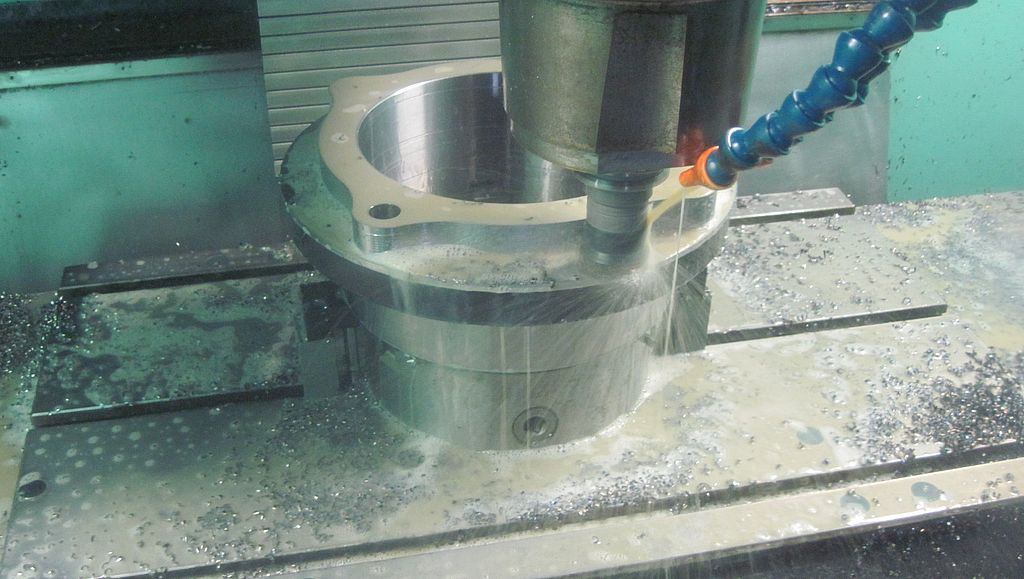Face milling is a combination of face milling and side milling which enables two planes to be generated simultaneously, with an angle of 90° between them. Face milling can be carried out with milling cutter heads with a 90o angle, as well as with end mills. Small milling offsets can be carried out by single-pass. For deep offsets, face milling is performed multi-pass with a cutting depth of 3 mm to 8 mm or with milling heads with a long cutting edge are used.
Face-side milling – what do we use?
In our plant, we mainly use face milling cutter heads manufactured by KORLOY from the Alpha Mill series AMS and Rich Mill series RM4. These enable us to carry out effective face milling with 90degr offset, slot milling, inclined milling and helical milling of holes. For the RM4 (as well as the RM3), it is possible to carry out helical milling in two stages by initially performing multiple plunge milling in an offset manner. In the second stage, multi-pass milling is carried out with the “side” of the head. The large rake angle of the cutting inserts in these heads significantly reduces the cutting resistance. As a result, a large offset height can be achieved, with hardly any pass marks visible.
When plunge milling of an offset is executed, it is important to maintain an appropriate balance between the size of the cutting depth, chip size in plunge milling and the depth of cut. The cutting speed for this operation should be lower; however, a higher feed per blade can be used.
When milling shallow offsets, it is possible to produce two finished surfaces. The first is when the offset depth has a value between 0.5 and 0.75 of the maximum depth of cut for the insert. The second, for inserts of type XNKT 080508 used for KORLOY RM3 heads, will have an offset depth of between 4 mm and 6 mm respectively. In deep face milling, the rigidity of the head fixture is an important factor influencing the machining results due to the significant radial forces generated. Multi-pass milling always requires a reduction in cutting speed. It is important to ensure that the machining is stable enough so that successive passes do not leave a visible mark in between. The rigidity of the tool and the stability of the shank is also essential when machining offsets deeply located in the workpiece.


